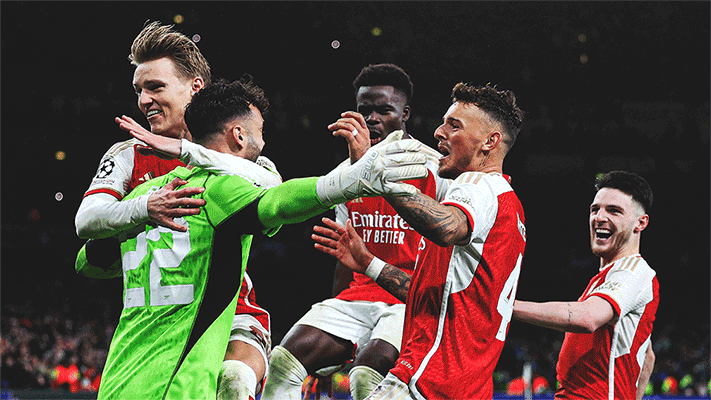By Tony Atwood
Season 1892/1893
| P | W | D | L |
| 61 | 34 | 4 | 23 |
There is one issue that leaps out at us from this schedule. We played five FA Cup matches and an astonishing 56 friendly games.
But in comparison with the previous seasons the crowds were noticeably down on the previous season. Arsenal had reached the heights in terms of local interest and were now in decline.
Maybe it was because too many matches were played, or maybe it was that all the main attention in football was now on the Football League and FA Cup. Maybe it was the cut backs at the Royal Arsenal factories following the end of the Boer War. Most likely it was all three.
Although Arsenal did get thumped out of the FA Cup 6-0, there was undoubtedly a feeling that the standards within the club were on the up. It would have been noted that Sunderland were the league champions this year. In the league they played 30 games, and scored 100 goals, so the defeat by 4-0 of a non-league team that did nothing but play friendlies and a handful of FA Cup matches, was more a sign of how Arsenal was getting closer to the standard of the league. Not there yet, but approaching.
"What we can say from over 100 years on is that if this attack on Royal Arsenal had not happened, then Arsenal would not have moved to the Manor Ground"
To put a different spin on this, Arsenal did beat Accrington 3-1 and Accrington were a first division side (the league having split in two at the end of the 1891/2 season. True Accrington ended the league season 15th out of 16 and so were relegated, but they were still a first division team when Arsenal played and beat them – Arsenal’s first victory over a first division team on 1 April 1893.
The draw with Derby was creditable too as most certainly was the victory over Small Heath who won the inaugural second division season of 1892/3.
The contradiction of the decline in crowds, and this growing ability to give the League teams a good game, must have encouraged the club to believe that having gone professional, then next step must be to offer games that the crowds wanted. A move into the League was called for. In short, if the crowds were going to return, Arsenal would need to be part of the national game, rather than a fringe team playing friendlies.
More than that, if Arsenal could get into the Football League they would be the only members south of Birmingham – something that ought to bring in the crowds.
But then, suddenly, a new issue arose.
A split occurred in the board room of Royal Arsenal where one group of directors who perceived themselves to be of the “gentlemanly class” as Mark Andrews put it in his earlier article on this site, attempted to oust the workers who had founded the club.
The gentlemen, if we can call them that, teamed up (or maybe were already teamed up) with a man who has already figured strongly in our story: George Pike Weaver. He was the man who had built the Invicta Ground, and who was now Royal Arsenal’s landlord.
But before we go on, the point must be made that the existence of a class struggle within a football was not confined to Arsenal – although the Arsenal example is probably one of the best known in football. We’ve covered another such struggle on this site in relation to Brighton.
Such fights tend to be nasty, and the Royal Arsenal battle was no exception. Weaver demanded a doubling of the rent – just at the moment when Arsenal’s crowds were in decline. He demanded his “own representative within the club who would be the sole arbiter of whether the club was being run properly or not.”
Mark adds that the gentlemen also engaged in bribing the landlord of Royal Arsenal’s alternative choice of home so that he would not sub-let the land to the club, and even setting up a complex scheme whereby Royal Arsenal might be induced to rent the alternative ground (the Manor Fields), spend a fortune upgrading the ground, and then nullify the lease, leaving Royal Arsenal both without a ground, and bankrupt
They employed, in short, every trick in the book, and some new ones they thought up just for this occasion.
This group even set up their own club – Royal Ordnance Factories FC – as a spoiler tactic.
It joined the Southern League, (although after a couple of years it collapsed suddenly part way through a season as it became clear that all the focus was on Royal Arsenal, not (as they were known) ROFFC.)
I’ll let Mark Andrews take up the story here…
"The planning to start up ROFFC was underway from late 1892. Around this period there are allusions in RAFC meetings that Weaver had not spoken to Royal Arsenal about ground lease renewals for up to 7 months, and it is difficult to see the subsequent events in any other way other than a concerted effort between the three ROFFC leading lights and Weaver to remove RAFC from the Invicta ground from the latter part of 1892 onwards
"This resulted in the Royal Arsenal Football club forming a limited company and changing their name to the aforementioned Woolwich Arsenal Football and Athletic Company Limited, taking over the assets of the Royal Arsenal Football Club on 3rdMay 1893. This stock flotation enabled them to raise money with the intention of renting a new ground and allowing them to move away from the Invicta Ground.
"However, the real credit must go to George Lawrance who at a critical time, when it appeared ROFFC were going to purchase the Manor Field themselves and thus leave Royal Arsenal’s newly formed Woolwich Arsenal club high and dry, ensured the freehold of the Manor Field was obtained by arranging contracts and the deposit with the freeholder of the Manor Ground in early June. It was later in the year that all the directors signed the 'joint and several mortgage' which was a personal loan against the body of directors as individuals not the company.
"Such fights tend to be nasty, and the Royal Arsenal battle was no exception"
"This was an incredible thing to do, for these men risked everything in their lives – their homes, their possessions, their bank accounts, everything – to protect the club that they had formed just seven years earlier."
What we can say from over 100 years on is that if this attack on Royal Arsenal had not happened, then Arsenal would not have moved to the Manor Ground.
But Royal Arsenal would more than likely have applied for and gained membership of the Football League (who loved the notion of a professional league club deep in the heartland of the amateur game) and they would still have been beholden to Weaver who owned the only viable stadium in town. The battle with him would probably have been postponed by no more than a year.
(Indeed it is because Weaver owned the only proper football ground in the area that he and his fellows thought they were invincible. His “take it or leave it, but you have no choice” attitude was based on the belief that Royal Arsenal FC needed to continue, and needed to continue at his ground.)
There is one final point we should note about this moment and once more I’ll quote Mark’s earlier article on this site.
"In Alan Roper’s book, David Danskin is alleged to have supported Royal Ordnance over Woolwich Arsenal football after 1893. This event made us re-evaluate Danskin’s role in Arsenal’s formation, as for him to support a team whose sole aim was to destroy Royal Arsenal FC would have placed him in a different less favourable light than currently portrayed by the club. We can confirm that there is no evidence from the sources we have utilised that he was involved in any way at all."
And so it was that after just seven seasons, Royal Arsenal came to an end amidst bitter argument, an unsavoury landlord, a split in the club, but ultimately the triumph of the creation of Woolwich Arsenal FC, just in time for the launch of their first league campaign in 1893/4.
I must add one other point of explanation however. The name 'Royal Arsenal FC' had served the club very well indeed since 1887, and it sounded very much like a club with a regal patron, or at least royal support (although of course it didn’t have such patronage). The name was changed because to become a League club Arsenal needed to become a limited company. And it is not possible to register a limited company with a name that suggests any association with the royal family.
Thus the journey from Dial Square to Royal Arsenal to Woolwich Arsenal was completed.










